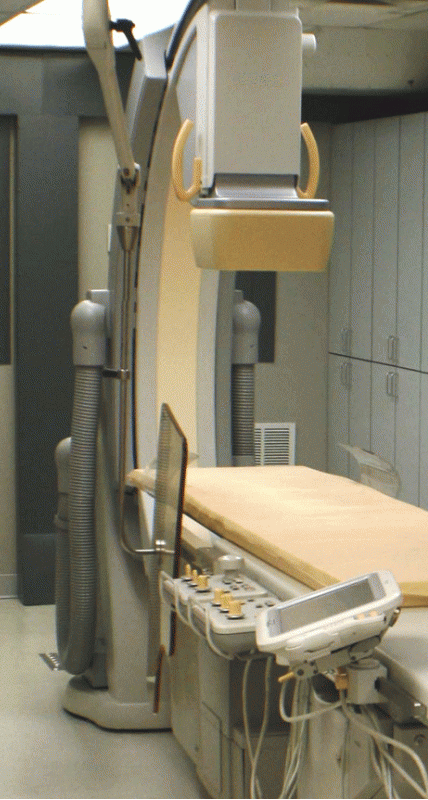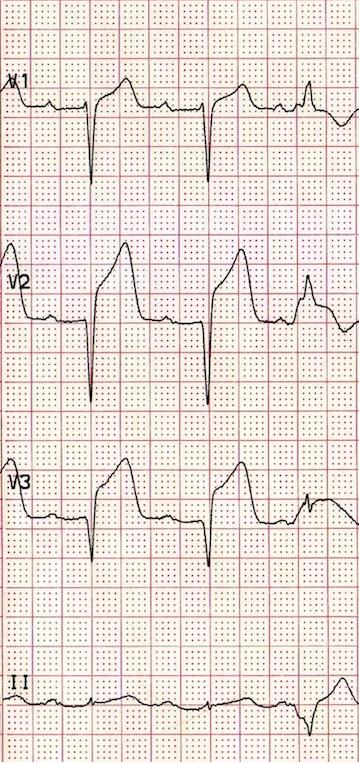Cardiac Output
Cardiac Output is the amount of blood pumped by the heart and delivered to the systemic circulation per unit of time. We express cardiac output in Liters / minute. Cardiac output is influenced by the heart rate and stroke volume. Stroke volume is the amount of blood pumped by the heart in one beat.
Cardiac Output (CO) =
Heart Rate (HR) X Stroke Volume (SV)
A normal cardiac output is about 5 to 6 Liters of blood per minute while at rest. During exercise, the cardiac output will increase significantly to meet the oxygen demands of the body. Based on the formula above, to increase cardiac output, the heart must beat either / both faster and stronger.
The cardiac output varies with age and steadily decreases over time. This is related to the body's metabolic rate diminishing as the body ages.
Because of the varying normal range of cardiac output related to age and weight, cardiac output is also expressed by a measurement of the cardiac index. Cardiac Index (CI) is measured by dividing the CO by body surface area.
Cardiac Index(CI) =
CO / Body Surface Area (M2)
CO / (0.007184 x weight0.425 (kg) x height0.725 (cm))
Simplified formula for Cardiac Index(CI) =
CO / [ ( √ weight (kg) x height (cm)) / 60]
A normal cardiac index ranges from 2.6 to 4.2 L/min/m2
There are several direct and indirect techniques for measuring cardiac output. The two measuements that are primarily performed in the cardiac cath lab are thermodilution cardiac output (TDCO) and the FICK formula.
Thermodilution Cardiac Output
The thermodilution technique uses the Swan-Ganz catheter that (SGC) has a thermistor tip that can measure the fluctuation in blood temperature. When the SGC is positioned in the pulmonary artery, cold or room temperature saline solution is injected into the proximal port that empties near the right atrium. This injection mixes with the blood and passes through the right ventricle and into the pulmonary artery. The thermistor of the SGC measures the difference in this cooled blood and the time it takes to return to baseline. The hemodynamic system uses this information to calulate the cardiac output from the right ventricle. Multiple injections are usually required (three to five) and an average is taken of the results that are within 10% of each other.
Be aware that tricuspid regurgitation will result in an inaccurate thermodilution calculation due to the interference of normal blood flow from the right atrium through the right ventricle and into the pulmonary artery.
FICK formula for Cardiac Output
The FICK formula was developed by Adolf Fick and assumes that blood flow to an organ can be calculated by using a substance, such as oxygen, and evaluating the arteriovenous difference in oxygen concentration. Grossman uses an example of a train that passes by a hopper that delivers marbles to the boxcars. Knowing how many marbles are in the box cars before they pass by the hopper and how many marbles they pick up from the hopper can help you calculate the trains output.
To use the FICK formula, you need the following 5 elements
- Hemoglobin: obtained from blood sample
- Aortic O2 saturation: obtained from arterial blood sample
- Pulmonary Artery O2 saturation: obtained from pulmonary arterial blood sample
- Hemoglobin O2 carrying constant: 1.36 (each gram of hemoglobin can carry 1.36 mL of O2)
- Oxygen consumption (VO2): 3 mL 02 * weigh (KG).

